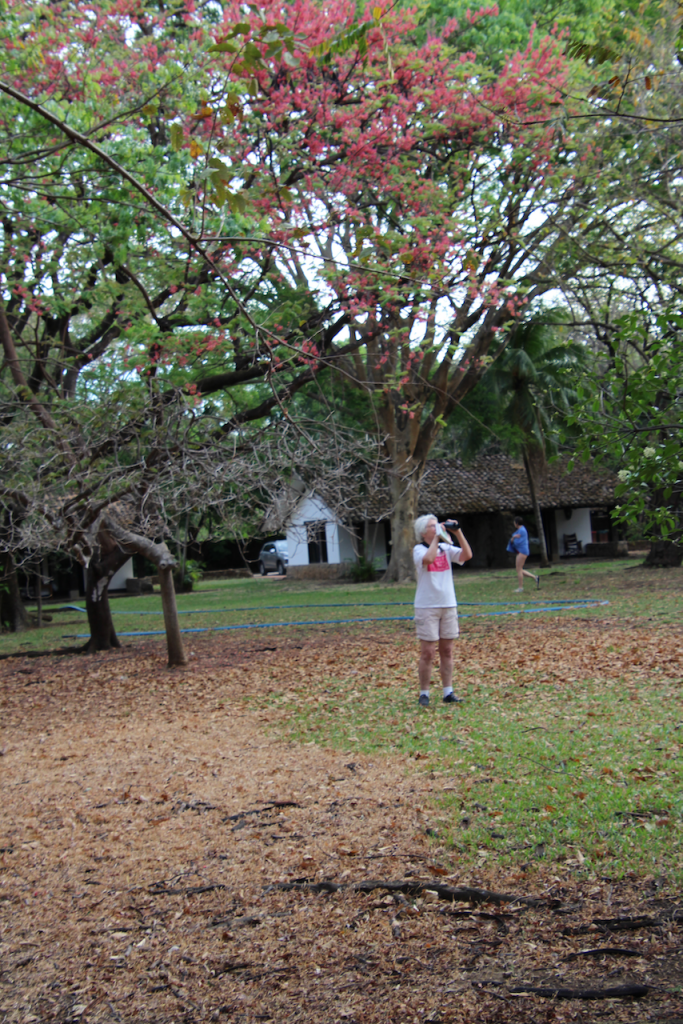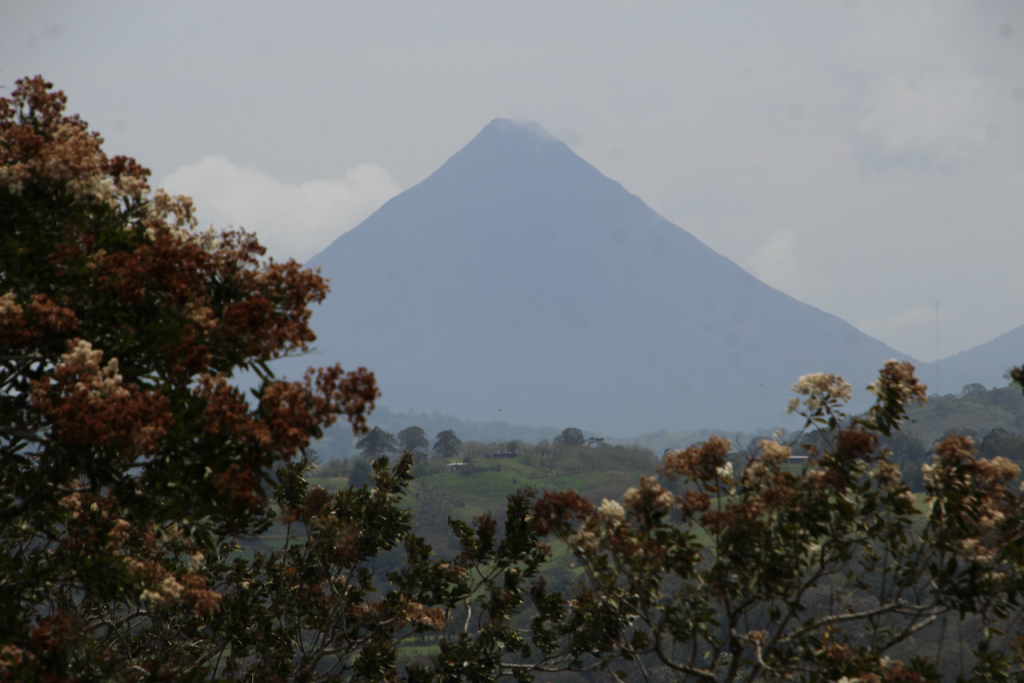So why were we headed to Guanacaste anyway? It was a long way from San Jose, about 120 miles, not considered a tourist destination, and very remote. When I asked Embry this question, she answered, “That is exactly why we are going. That is what I was looking for.”
Good enough answer for me. The initial part of the ride out of San Jose was surprisingly stress free. The road was six lanes most of the way and built to interstate standards with the dreaded ditches safely placed on the far side of the shoulder. There was lots of traffic, but the motorcycles, cars and trucks zoomed along with only a few backups. We were headed toward the Pan American Highway, called CR 1 in Costa Rica. This highway—or, more accurately, a network of connected roads—connects the northernmost part of Alaska with the southernmost part of South America. It is the longest continuous road network in the world covering 19,000 miles with only one small stretch of about 70 miles (the infamous “Darien Gap” between Columbia and Panama) where there is a break.
As we passed over one mountain range and then another and headed down toward the Pacific Ocean, the road narrowed, and we passed, of all things, a container storage area used by containerships, though standing alone on the side of a mountain and not apparently close to the ocean. Moments later the Pacific came into view, and we saw signs directing us to CR-1. We had made it through the first leg and would be headed north to Guanacaste for another 50 or 60 miles before we reached our destination.
What I did not expect, however, is that the mighty Pan-American Highway in this part of Costa Rica would turn out to be a two-lane road with dreaded drainage ditches replacing the shoulders—or worse, steep drop offs, or being dangerously close to unprotected construction sites where road rebuilding was starting to happen. It was a nightmare. When we managed to squeeze our way onto what was more like a parking lot than a road, we realized it was going to be a long slog to our hotel in Guanacaste. The initial GPS estimate was three hours from our hotel in San Jose. The actual time ended up being closer to five hours.
The benefit of slogging it out on a decrepit, jammed two-lane highway was that as we crept along, we were able to pass through village after village and get a feel for Costa Rican life in the countryside. When the new freeway is completed years from now, all these villages will be gone or relocated. Had we been on a new freeway, we would have missed all of this. For the most part the homes were quite modest, some constructed out of tin, cardboard, and discarded building materials, and a reminder that poverty still prevails in this “most progressive” of all the Central American countries. It also occurred to me that if some alien happened to land in Costa Rica instead of Washington DC, it would be a more accurate representation of how human beings live on the planet Earth. There are about eight billion of us humans now living on this small and obscure planet but at most no more than a couple of billion live in so called “advanced” or “developed” countries, even fewer in nice homes and neighborhoods. Within Washington, neighborhoods vary enormously, and we have our own nagging problems of poverty and inequality. My guess is that if the alien traveler stayed for very long, he or she would report back that the troubled planet had better get its act together pretty soon or it might not be worth a visit.
Embry had wanted to come to an area where you would not find many tourists. Guanacaste did not disappoint. We did not hear anyone speaking English among themselves and only saw a handful of others who appeared to be tourists. The resort that Embry had chosen was about five miles from the nearest village. The “Hacienda de la Pacifica” was a gated community and former ranch of several hundred acres on which were constructed about 25 cottages situated at the edge of a lush, ancient forest surrounding a meticulously groomed open area with a beautiful lap pool. A small lodge and dining area were only a few minutes’ walk from our front porch. Our one-bedroom cottage had a living and dining area and full kitchen and must have been almost 1,000 square feet. You could rock on the front porch and watch the sun rise and set and enjoy watching extraordinary wildlife only yards away—exotic birds, cute little creatures that looked a little like large, fat squirrels without tails, deer everywhere, and occasional visits from families of monkeys. It was just what the doctor ordered. At best the resort was only about a third full with only a few tables occupied at dinner or breakfast besides ours. It felt like we had the whole place to ourselves.

We took two all-day excursions. On the first day we drove on a two-lane highway about 50 miles up the mountain toward the east where I read in the guidebook that you could have views of the most famous volcano in the country, Arenal Volcano, and the largest lake, Arenal Lake. On the second day we drove about 40 miles west to a national park bordering the Pacific, Santa Rosa National Park. Both excursions were spectacular but very different. The drive up the mountains took us through arid foothills, an area similar to the California coastal area; and then as we approached the summit, we found ourselves in a tropical rain forest before the narrow road started down again. The views of the volcano and the lake were spectacular and worth the nail biting and at times terrifying experience of trying to dodge a bus or truck on a hairpin switchback without going off a cliff or into a drainage ditch. When we got too close to a ditch, Embry would warn, “Ditch, ditch!” and I would grit my teeth and try to edge the car a few inches more toward the middle.

The second excursion took us to an isolated “dry forest” where it heavily rains most days from late May through September and then no rain at all from October through early May. Since we were visiting toward the end of the dry season, few trees had any leaves, and the creek beds were bone try. We were told that by July, the forest would resemble a tropical jungle with the bone-dry creeks raging and flooding the narrow walking paths. When we arrived at the national park, there was only one car parked in the parking area, which could accommodate no more than about a dozen cars, and that belonged to the forest ranger. Only one other car showed up while we were there. If Embry did not want to go where we would find a bunch of gawking U.S. tourists (like us), she surely found it.
So that was about it—a short and sweet visit but not nearly long enough to see the extraordinary diversity and natural beauty of this tiny country. You really need at least two weeks for that. Two weeks of driving, however, would have been more than I could have handled. But what we did see and experience gave us a taste and enabled us to understand why there is so much enthusiasm about the beauty and diversity of Costa Rica.
I wish I could say the drive back to San Jose was uneventful, but, alas, we witnessed four crashes on the northbound lanes on our way driving south on the Pan American Highway with traffic backed up for miles and ambulances hemmed in and not able to get to the those injured. While traffic was moving fairly quickly on our side going south, the “Waze lady” on our GPS came on and directed us about halfway into the drive to get off the Pan-American and take a small, two-lane road over the two mountain ranges. This proved to be yet another harrowing experience with numerous steep switch backs but thankfully not a lot of traffic—and, of course, spectacular views. It also took us almost six hours to reach the hotel near the airport where we would depart the next morning. When we dropped off our car at the Avis agency, I raised my arms again and exclaimed, “Victory, we did it!” The ordeal getting here turned out to be worth the effort. My intuition tells me that this trip probably marks the end of my “adventure travel,” (Embry is taking our two granddaughters to Europe for three weeks this summer with Jessica helping.), but what a ride this has been! Stay tuned for some final reflections on our travel experience in the next blog post.
Incredible story telling!!! Thank you for including the photos. You guys are beyond amazing. So relieved you got through it without a car accident! Good going Joe and Mimy!
Wow. Quite a volcano shot!
Harrowing driving though. I literally cannot drive now on those kinds of drop-off-the -cliff- at- any- moment roads.
Diane is called into action at Mt. Rainier now, and John drove me up in Colorado at Rocky Mt. State Park a few years ago.
Embry does have a few years on you as does Diane on me.
Wow, what a trip! You guys are amazing. We’ve definitely got to get to Costa Rica!
Incredibly, a 17-year-old cycled the entire 32,000-kilometer length of the Pan-American Highway, from Prudhoe Bay, Alaska, the northernmost point in the United States accessible by road, to Ushuaia, Argentina, the southernmost point of South America!
CNN: This teenager cycled from Alaska to Argentina
https://www.cnn.com/travel/article/teenager-who-cycled-from-alaska-to-argentina/